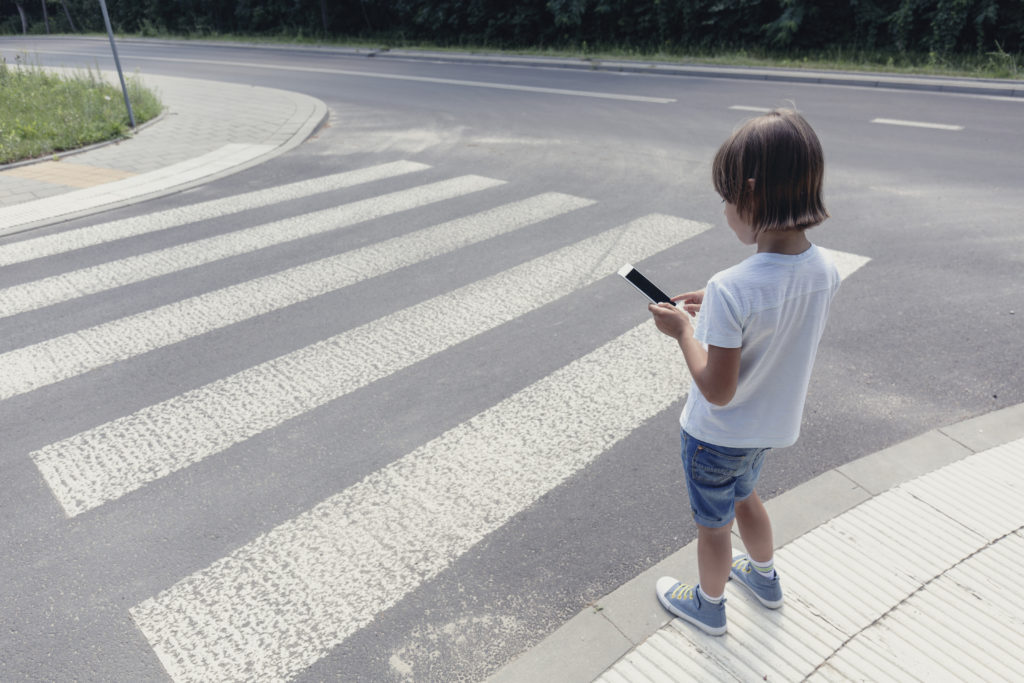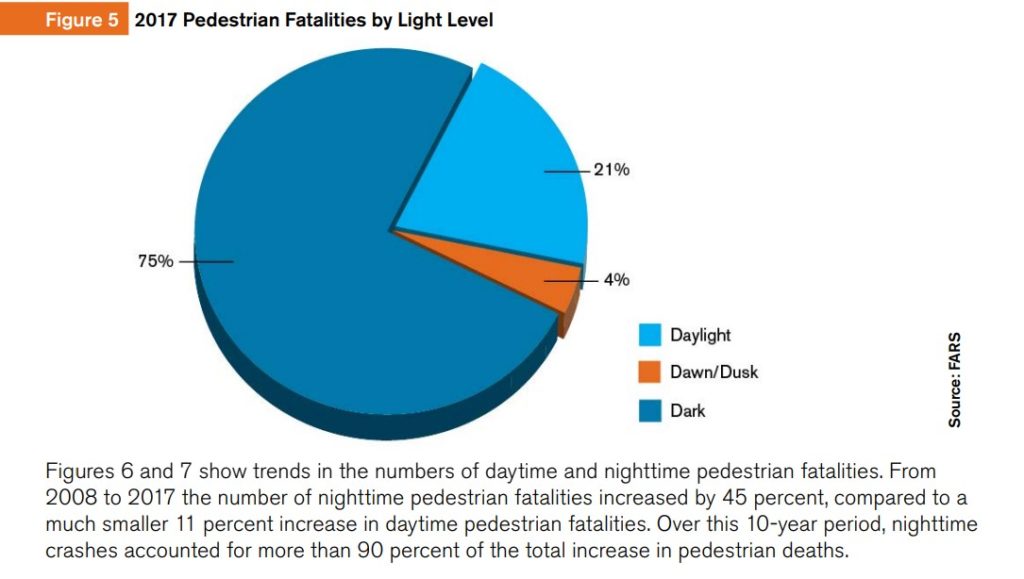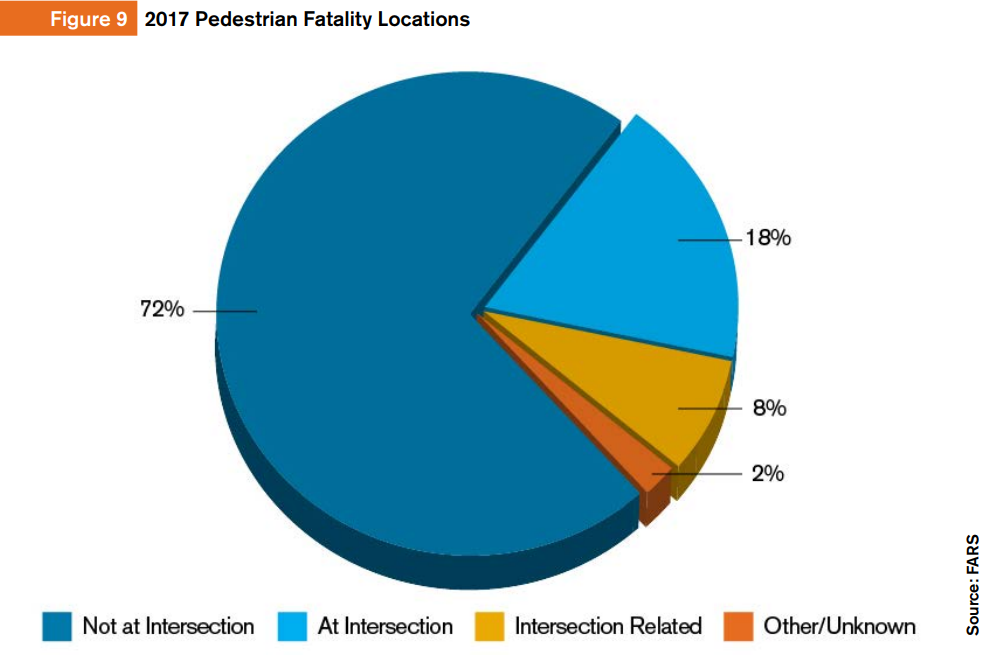What Is Causing a Dramatic Increase in Pedestrian Deaths?

Boy with a smartphone standing at pedestrian crossing next to the road
Now that the nation has sprung forward to observe Daylight Saving Time, a ray of hope lies ahead for fewer pedestrian deaths on U.S. roadways. Longer days and shorter nights mean more visibility for motorists and for those on their own two feet. So say officials in New York City.
“The earlier sunset and darkness have been linked to an increase in the number of pedestrians killed or seriously injured by vehicles, according to an analysis by the city’s Department of Transportation of data from 2010 to 2014, the most recent years available,” states an article in The New York Times titled “As Evening Commute Gets Darker, It Also Gets More Dangerous, Officials Warn.”
The Big Apple is not alone, according to University of Michigan professor Michael Flannagan.
“You do see a big jump in pedestrian fatalities and injuries in the evenings in the fall when the change back to standard time makes the evenings suddenly darker,” Flannagan told The Times.
Over 6,000 pedestrians lost their lives to drivers in 2018, the Governors Highway Safety Association reports. That number represents a significant jump from the 4,000-plus pedestrian-vs.-vehicle deaths 10 years ago. The five states that account for almost 3,000 of those deaths are Arizona, California, Florida, Georgia and Texas, with Florida and California ranking the deadliest. Legislators there are pushing for permanent Daylight Saving Time, although the law needs to pass a congressional hurdle before it can be implemented. With any luck, that hurdle will be cleared before America falls back in November.
“Lawmakers in Tallahassee passed a bill in the spring of 2018 that would have made Florida the first state to make Daylight Saving Time year-round, meaning it would enjoy later sunsets (and later sunrises) 365 days a year,” states an article in the Tampa Bay Times titled “Daylight Saving Time starts Sunday. Could this be Florida’s last time switch?” “But to make it reality, Congress needed to approve it – and that’s where the prospect died….”
Florida Republican Sen. Marco Rubio has not given up and is backing a bill called the Sunshine Protection Act of 2019, which aims to keep Daylight Saving Time year-round not only in Florida but in all 50 states. Rubio said among the innumerable benefits of the bill is a reduction in pedestrian-vs.-vehicle deaths.

Pedestrian Fatality by Light Level — Courtesy of GHSA
“We have heard from countless Floridians about the importance of maintaining Daylight Saving Time, including benefits to our economy, public safety and health,” Lt. Gov. Jeanette Nuñez said in a press release titled “Rubio Introduces Bills to Make Daylight Saving Time Permanent.” “I look forward to working with Senator Rubio and his colleagues on addressing this issue. I am confident that the Sunshine State will lead the growing movement across the nation in adopting DST year-round.”
Other contributing factors attributed to the rise in fatalities are signs of the times – smartphones and SUVs. The former dangerously distracts users to where they no longer are aware of their surroundings.
“I’ve been in this business for 36 years and I’ve never seen a pattern like this,” transportation-safety expert Richard Retting told The New York Times in another article titled “Pedestrian Deaths in U.S. Approach Highest Number in Nearly 30 Years, Study Shows.” “We can’t say in any definitive way that the amount of wireless data and the amount of smartphone use is an exact cause, but the relationship is uncanny and it’s not unrelated. The fact is that many, many smartphones are used while people are driving cars.”
As for the latter, SUVs are riddled with blind spots, and their large-bodied design traps pedestrians underneath them rather than pushing them onto the hood or out of the way.
“The SUV factor is likely why pedestrian deaths have steadily increased even as traffic deaths have slightly decreased over the same period,” states an article in Curbed titled “Better car design could prevent pedestrian deaths, says NTSB report.” “Although SUVs are much safer for the humans riding inside of them, SUVs are deadlier for the humans they strike.”
The National Transportation Safety Board has lauded the efforts of car makers in other countries designing systems that detect pedestrians, airbags that inflate outside and hood designs safer in the event of an impact.
“The public would benefit from knowing that the model vehicle they are considering for purchase has pedestrian-safe design characteristics, and their choices could in turn affect the implementation of pedestrian safety systems in new car designs,” the agency states in a Highway Special Investigation Report on pedestrian safety.
Adding to danger for pedestrians might be our own choices. Over 70% of pedestrian related injuries in 2017 happened away from an intersection. Crossing busy streets at places not designated for crossing may be adding to the danger.

2017 Pedestrian Fatality Locations Courtesy GHSA
As well, our attachment to our devices and the seemingly habitual need to text and walk, email and walk and to communicate on social media may be adding to distractions for walkers, and drivers.
Share This


